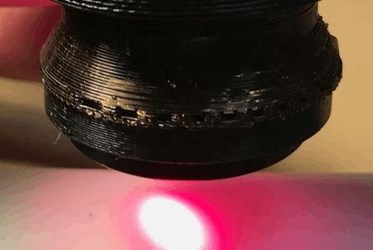Verily, UCLA's Wearable Microscope Tracks Biomarkers Beneath The Skin

A wearable microscope designed by scientists at the University of California, Los Angeles (UCLA) and Verily Life Sciences is capable of detecting trace amounts of fluorescent biomarkers beneath the skin. Researchers said the technology could continuously monitor a panel of biomarkers and assist patients with the at-home management of chronic conditions.
Recent advances in biocompatible fluorescent dyes have expanded options for cancer diagnostics, drug delivery, and other therapies, but researchers exploring potential non-invasive imaging techniques have been challenged by the natural fluorescence — called autofluorescence — in human skin. A successful system, explained researchers in a press release, must be sensitive enough to distinguish between naturally occurring biological structures — such as collagen and melanin — and targeted biomarkers.
The finished wearable weighs less than 40 grams and is small enough to be worn on a patient’s bicep. A laser embedded in the wearable hits the skin at an angle and captures a fluorescent image, which is then transmitted to a computer. A specially designed algorithm then separates fluorescent signals from autofluorescence.
In a study published in ACS Nano, the team — led by Ayodogan Ozcan, associate director of California NanoSystems Institute, and Vasiliki Demas of Verily — tested its mobile microscope by injecting trace amounts of fluorescent dye up to 2 mm beneath artificial skin. The device demonstrated a “parts-per-billion” level of sensitivity and was capable of auto-correcting potential misalignments.
“We can place various tiny bio-sensors inside the skin next to each other, and through our imaging system we can tell them apart,” Ozcan said. “We can monitor all these embedded sensors inside the skin in parallel, even understand potential misalignments of the wearable imager and correct it to continuously quantify a panel of biomarkers.”
Authors of the study speculated that the device could continuously monitor a panel of different biomarkers consistent with chronic illness, and that the system is small enough, and cost-effective enough, to be used by patients at home.
Insiders and experts recently told STAT that Verily is achieving much more success with its partnerships than with its moonshot projects. A collaboration with Johnson & Johnson called Verb Surgical aims to create a new robotic surgery platform, and Verily is working with Dexcom on a next-generation CGM, slated for a 2018 launch.
Few of Verily’s independent projects have managed to get off the ground, according to the STAT report. David Walt, Tufts University chemistry professor, told STAT that Verily tends to do better with physical measurements than they do with “chemical and biological stuff.”
Currently, Verily is working with the NHS on a pilot project to analyze data from lung and heart patients, with hopes of better understanding the patients’ diseases and their progression. A recently launched collaboration with GlaskoSmithKline aims to develop and commercialize bioelectronic medicine.
